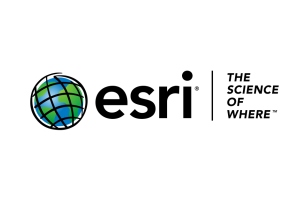Redlands, California – The 870 kilometres of Rail Baltica are divided into several sections across each of the three Baltic countries: Estonia, Latvia, and Lithuania. An ongoing electric rail infrastructure project in the region, Rail Baltica’s purpose is to provide sustainable passenger and freight service between participating countries and improve rail connections between central and northern Europe. To help engineers plan, construct, and manage maintenance tasks to make improvements, RB Rail AS and Esri, the global specialist in location intelligence, have signed an enterprise agreement to integrate geographic information system (GIS) software across all project units.
“As the Rail Baltica project progresses, the amount of data that needs to be managed grows significantly, as do the needs of its GIS users, so the Esri Enterprise Agreement was a natural choice to ensure strengthening the capabilities of GIS in the Rail Baltica project,” says Raitis Busmanis, head of the virtual design and construction department at RB Rail AS, the Rail Baltica joint venture.
Esri’s ArcGIS software will be used as a connection hub, and all asset data will be stored and handled in a unified spatial database. The system will also serve as a foundation for implementing the Rail Baltica digital twin, a virtual model of the railway’s entire operational infrastructure.
“GIS technology is universal and allows integration of various data formats and easy sharing of information with project partners for example, to review design data, monitor construction progress, track deadlines, and manage and maintain asset registers,” continues Busmanis. “We believe that collecting the design and construction data during those stages will have a huge benefit during the operations and maintenance phases, making them more efficient and cost-effective. Good quality and structured data are key components for assuring sustainable operations of the Rail Baltica digital infrastructure, and Esri’s ArcGIS solutions can help us get there.”
The holistic geographic approach that the new GIS system will bring also allows railway personnel to make necessary adjustments in near real time and plan routes to be less environmentally impactful.
“We are proud to sign this agreement with RB Rail AS, representing the application of GIS across its enterprise as the foundation of a system of systems,” says Ian Koeppel, Esri’s international business development lead for transportation markets in Europe. “Enabling these large international projects to create location-intelligent digital twins is a big step toward building a sustainable European infrastructure network.”
To learn more about how Esri technology is helping improve infrastructure development, visit here.
Comment on this article below or via Twitter: @IoTNow_OR @jcIoTnow.










